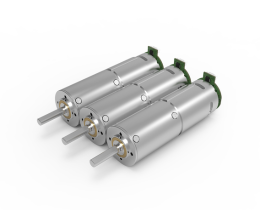The Little Powerhouse You’ve Been Overlooking: Meet the 6V DC Gear Motor
Let’s talk about something small but mighty. Picture this: a device no bigger than your palm, quietly driving everything from robotics to medical devices. No, it’s not a sci-fi gadget—it’s the 6V DC gear motor. And if you’re thinking, “Why should I care?” Well, let’s rewind.
.webp)
Imagine a coffee grinder that never jams, even with the toughest beans. Or a DIY rover that climbs uneven terrain without stalling. That’s the magic of a well-designed gear motor. The 6V version? It’s like the Goldilocks zone of compact power—enough torque to handle surprises, but energy-efficient enough to avoid draining batteries mid-task.
Why 6V? Let’s Get Nerdy (But Keep It Fun)
Voltage isn’t just a number. Too low, and your motor wheezes. Too high, and it burns out faster than a matchstick. Six volts hits the sweet spot: stable performance without overheating. Think of it as the “just right” porridge for applications needing reliability over long runs.
One user once asked, “Can it survive daily wear and tear?” Short answer: Yes. Longer answer: KPOWER’s motors use brushed steel gears and precision-wound coils. Translation? They’re built to outlast your average gadget.
But Wait—What Makes This Motor Stand Out?
Glad you asked. Let’s ditch the jargon. This isn’t just about RPMs or torque curves (though those matter). It’s about predictability. Ever used a motor that works perfectly… until it doesn’t? Frustrating, right? The 6V DC gear motor avoids that drama. Its sealed design resists dust, and the thermal protection keeps it cool under pressure.
Here’s a story: A hobbyist built a custom camera slider for time-lapse videos. They needed smooth, silent motion. After three failed motors (noisy, jerky, or just plain dead), they tried the 6V gear motor. Result? Butter-smooth pans and zero burnout after 48 hours of filming.
Q&A Time (Because Curiosity Rules)
“Is it compatible with Arduino projects?”
Absolutely. It plays nice with most microcontrollers. No extra adapters needed—just plug, code, and go.
“What if I need more speed?”
Trade-offs exist. Higher speed = lower torque. But here’s a pro tip: Pair it with a PWM controller. You’ll get adjustable speeds without sacrificing muscle.
The KPOWER Difference
We don’t just sell motors; we solve headaches. How? By obsessing over details most ignore. Like using double-shielded bearings to reduce friction. Or pre-lubricating gears so they stay quiet for years. It’s the kind of stuff that keeps customers coming back—not because they have to, but because they want to.
Still on the fence? Consider this: A reliable motor isn’t an expense. It’s an investment in not yelling at your project at 2 a.m. Whether you’re automating a greenhouse or prototyping a mini conveyor belt, the 6V DC gear motor is the silent partner you’ll wish you’d met sooner.
So, next time you’re knee-deep in a build, ask yourself: “Do I want power that fizzles—or a workhorse that lasts?” The answer’s pretty obvious.


































.webp)

